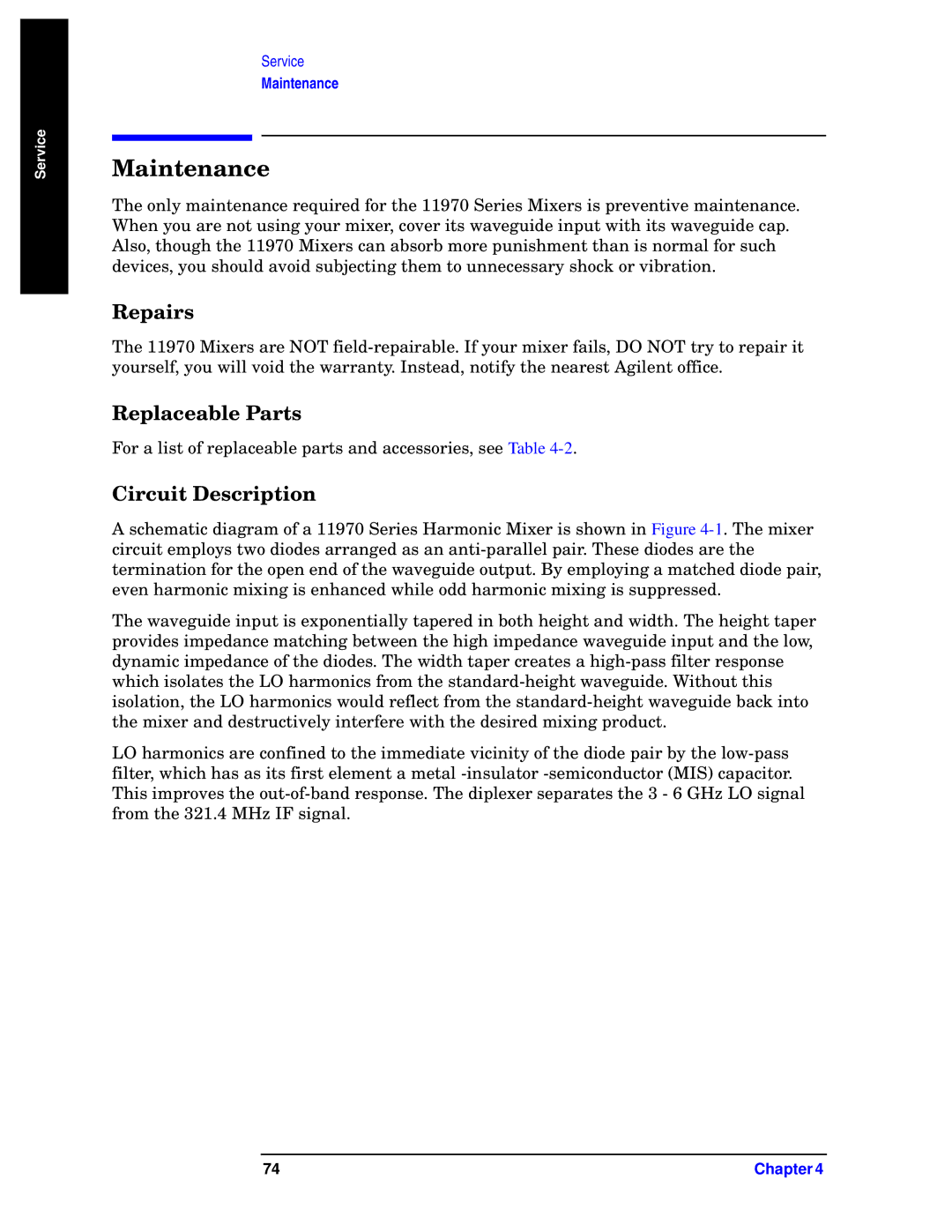
Service
Service
Maintenance
Maintenance
The only maintenance required for the 11970 Series Mixers is preventive maintenance. When you are not using your mixer, cover its waveguide input with its waveguide cap. Also, though the 11970 Mixers can absorb more punishment than is normal for such devices, you should avoid subjecting them to unnecessary shock or vibration.
Repairs
The 11970 Mixers are NOT
Replaceable Parts
For a list of replaceable parts and accessories, see Table
Circuit Description
A schematic diagram of a 11970 Series Harmonic Mixer is shown in Figure
The waveguide input is exponentially tapered in both height and width. The height taper provides impedance matching between the high impedance waveguide input and the low, dynamic impedance of the diodes. The width taper creates a
LO harmonics are confined to the immediate vicinity of the diode pair by the
74 | Chapter 4 |
